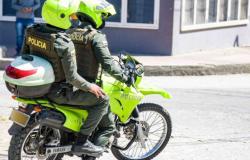The extensive biodiversity, types of ecosystems and ecosystem services present in the Cauca’s Valley offer the possibility of seeing more than 565 species of birdsidentify sounds of multicolored amphibiansconnect with nocturnal primatesenjoy the flight of hundreds of thousands of pigmented butterflies, like a rainbow, among other benefits of the territory that are accompanied by mountain formations, tropical forests and diverse climates, thus creating perfect settings for enjoyment, recreation and admiration; however, the illegal extraction of wild species It is another reality that generates social, environmental and health impacts.
A biodiverse valley
Bordering the departments of Chocó and Risaralda to the north, Tolima and Quindío to the east, Cauca to the south and the Pacific Ocean to the west, the Cauca Valley offers the right ecosystems so that the diversity of species can develop and be enjoyed with the naked eye. These elements play a fundamental role in the conservation of species and ecosystems, as well as enabling ease of extraction for the species trafficking.
In Valle del Cauca alone, more than 3,000 seizures and seizures of animals in more than 1,253 operations since 2020 to date, in which environmental entities and activists participate, according to figures from the Valle del Cauca Regional Corporation (CVC).
In many of these operations, a great variety of species can be found, among which stand out frogs, reptiles, nocturnal primates, colorful birds and turtles, like the most trafficked in Valle del Cauca. Now, specifically, in Cali they seize possumsbirds, iguanas and nocturnal primates among many others, but for what purpose?
Several of the species are harvested for hundreds of purposes. Poison dart frogs, especially sought after for their bright colors, are used for collecting or for its powerful poison which is used to obtain substances for medical and even aesthetic use. Health benefits have been known about them, a fact that makes them even more attractive to traffickers, illegal researchers and even curious inhabitants.
However, what many do not know is that these, like other species, fulfill specific functions in their ecosystems, as seed dispersers, pest controllers, pollinators, among others.
In addition to the above, each species contains microorganisms, such as bacteria and viruses that in foreign areas and without regulation and control can mutate and pass to others, endangering the lives of domestic and wild animals and humans themselvespossibly generating endemic species that can plague territories where they do not naturally live, becoming a harmful invasive species.
Other of the most trafficked animals are mammals such as nocturnal primates, felines and sloth bears for their skins, charisma or meatwho suffer a terrible situation, since by removing the offspring from the mothers, they are killed, which generates a decrease in the populations of species, causing their disappearance in the localities where they are extracted and leading them towards a possible threat of extinction, as mentioned Gustavo Alberto Trujillo Barrientosbiologist from the environmental department of the CVC.
It may interest you: Coffee with Valle del Cauca aroma
Faced with this crisis, government entities have identified the areas most prone to wildlife traffickingamong those the mountain ranges as pristine places in the Pacific of Valle del Cauca from which native tropical forests emerge.
A business that invoices in accessible places and whose impact is unknown
Although some media outlets, opinion leaders, among others, offer figures or talk about wildlife seizures, It is unknown how much this illegal movement can represent economically. in Valle del Cauca and, of course, in Colombia.
There are people, entities and institutions that They risk saying that wildlife trafficking generates certain values or that it is the second economic power; However, this is wrong, since it depends on how the people who sell it handle it, since they can request amounts depending on the interest or situation that arises in the purchase or with the client.
Many animals can be offered for 200 thousand or 20 million pesosthen mentioning that there is an average or referring to black market values is difficult and irresponsible.
Regarding traffic, we know that large figures are handled, from what one hears in the news, but those are the values that can be given exclusively at the moment in which the transaction is expected to take place, as Trujillo from the CVC expresses it.
On the other hand, as we already said, the city of Cali is located in a geographical area that is very strategic in the illegal trade of wildlife, since it is very close to the port of Buenaventura and is part of the southern, northern or southern corridor. south center of the country, that means that, strategically, for trafficking and for these illegal groups it allows them to pass or be a reception bridge for illegal wildlife that is extracted from the forests in the south of the country, which are the Amazon forests. This is explained by Nicolás Melo, veterinary doctor, leader of the IBC wildlife group of the Administrative Department of Environmental Management (DAGMA).
Humanizing and taming wildlife vs. social responsability
Several countries have regulations that allow the possession of wild animals, for example felines. However, Colombia prohibits the hunting, capture, commercialization, reproduction and possession of wild native speciesmaking this an environmental crime penalized by law, which brings with it prison sentences, daily fines and sanctions.
Now, it is important to say that cases of humanization of wild animals are compared to killing an animal on many occasions, because by removing a small animal from its habitat and living with it, it changes its behavior, making it impossible for it to adapt again to its wildlife later.
The above happens, for example, with primates, who see in humans, the possibility of getting food easily, without effort and, by understanding thisthey stop implementing what they have biologically learned in their ecosystem, generating atrocious damage to the territories and perpetuating an erroneous idea in society about the possession of this type of wild species.
Now, unlike the wild ones, the domestic species that have traditionally accompanied us, have been in this conditioning process for hundreds of thousands of years, for this, humans have exercised different actions such as genetic improvement, breed selection and others for consumptionaccompaniment, among others.
This has happened with cattle, dogs, and others now called companion animals, as a manipulation of certain species, which has occurred since approximately 13 or 14,000 years ago, when man served as a hunter/gatherer.
On the other hand, what is considered wildlife is found in the natural environment and at the moment in which the person agrees to take it and take it home, tames him, not domesticates him, Well this refers to an entire species.
Enough tools to mitigate wildlife trafficking?
The law protects and covers several aspects to punish trafficking and safeguard wildlife through The criminal code. For the above, there are two ways to proceed, such as administrative action through the environmental authority and following the criminal code through the corresponding entities.
In this way, the entities work hand in hand with prosecutors and judges to generate awareness and pedagogy, since, on several occasions, some of the regulations are unknown, since they are addressing too many different particular situations in the country such as the exploitation of people. , drug trafficking, murders, among others to mention. Thus, information and, above all, relevant actions or ways of proceeding continue to be strengthened at the inter-institutional level.
There are laws that even allow the use of wildlife through zoo breeding of some species, however in Cali permits are not issued.
Now, Valle de Cauca has farms related to the breeding and production of butterflies using their pupae for different purposes and marketing at a national and international level.
A physical and virtual problem
Wildlife trafficking can be observed on the roads and highways of the region, as well as in places near mountainous areas. Until the early 90s, it was even common to observe the sale of small wild animals in commercial centers., like market squares. However, there is currently a modality that lurks globally in social media groups or communication applications such as WhatsApp and Telegram.
There are also social media pages on the Internet that dare to commercialize exotic and wild species, for this reason, many of the complaints that have reached environmental entities have been worked on jointly with the Sijin and interpol, which have been able to make seizures and confiscations of some animals, as mentioned by Nicolás Melo, from DAGMA.
For Trujillo Barrientos of the CVC, all the information they find on social networks is passed on to Police intelligence. They are the ones in charge of doing the tracking because it is not only what you see on the pages because there is a dark web where Business is even more perverse.
Awareness strategies and citizen culture
Awareness campaigns in Valle del Cauca are constant, reminding locals, visitors and tourists that Wildlife are not pets.
These activations take place at transport terminals, at the Alfonso Bonilla Aragón airport, inter-municipal roads, among others, and especially on special dates such as Easter, Christmas, New Year, summer holidays and between each semester of higher basic education.
This with the purpose of encourage awareness of respecting fauna, enjoying it in its natural habitat and denouncing traffickers, that can even be seen on the roads offering different species.
“We work to raise awareness to try to completely discourage the possession of wildlife. We come from a country that we could say is agricultural, with beliefs and philosophies related to animal companionship and we seek for new generations to have a perspective of the diversity of protection and care of seeing animals free in their environment fulfilling their fundamental role. within the ecosystem“, points out Nicolás Melo from DAGMA.
This being the case, the awareness and sensitization strategy continues, but as long as there are people who acquire on the roads, on the Internet or extract units from their environment, the fight to respect life between species will continue.






